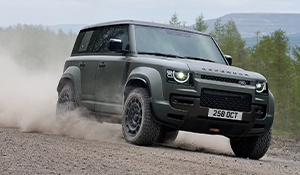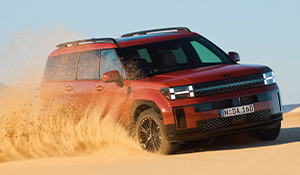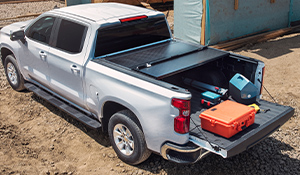How To: Packing Gear
Words Dean Mellor
Four wheel drives are not only great for accessing places that normal passenger cars can’t reach, but when you travel they also allow you to carry with you many of the comforts of home… even the kitchen sink. But beware: overloading your vehicle can have serious consequences, and can also take the fun out of the adventure by adversely affecting vehicle handling and performance, both on the road and off it.
Whether you’re planning a weekend escape or packing for an extended outback adventure, there are certain pieces of equipment you need to carry on every off-road trip, such as recovery gear, tools, spare parts, water, food, first aid kit and fuel. Then there’s camping equipment, sleeping gear, cooking utensils, clothing, cameras, iPads, charging equipment… the list goes on. But it’s important to resist the temptation to carry more gear than you need.
To ensure easy access to your gear when you need it, you need a sensible packing plan, and you also need to ensure you don’t exceed your vehicle’s load carrying capacity.

There’s a limit
The most obvious thing that will limit the amount of gear you can take on a trip is the physical space available in your vehicle… if you exceed it, you’ll have to consider packing items up on a roof rack or in a trailer. Hopefully you will have purchased the right four-wheel drive to suit your needs, so it will be big enough to carry all of your gear and, if necessary, have an adequate roof-load capacity and/or towing capacity.
The next limit to consider is just how much weight your vehicle can carry. The owner’s manual will list the payload capacity in kilograms but this figure doesn’t equate to the amount of gear you can throw in the back. The weight of accessories such as a bull bar, winch, driving lights, UHF radio/antenna all contribute to your vehicle’s overall weight (GVM – Gross Vehicle Mass), so the more accessories fitted to the vehicle the less luggage it will be able to carry. The best way to ascertain how much gear you can pack in/on your vehicle is to put it on a weighbridge, fully fuelled and with any water tanks full, and subtract that measured weight from the vehicle’s GVM. The figure you’re left with will be the weight you pack into your vehicle, including you and your passengers.
You might be surprised at how little weight you have left to play with, especially if you drive a 4x4 wagon, so it’s important to consider weight when purchasing camping equipment and other gear. Items such as lightweight tents won’t be as heavy as swags, for example, and a 40L fridge won’t weigh as much as a 60L fridge.

The low-down
The next thing to consider is the best way to pack your vehicle. Obviously, you’ll want easy access to items you might need regularly, such as cameras, jackets, water and food, and you’ll also need to be able to get to your recovery equipment in a hurry if things don’t go to plan. Tools, oils, spare parts and the like can probably be packed away in harder to get at places.
You’ll also want to keep weighty items as low in the vehicle as possible. If you throw all the heavy stuff up top it will raise the vehicle’s centre of gravity, which will in turn affect ride and handling, possibly extending braking distances and definitely increasing body roll when cornering, and when driving over uneven terrain off the road.
Water is one of the heaviest things you’ll be carrying and the best way to keep this low in the vehicle is to fit a water tank down near the chassis rails. Likewise, a long-range fuel tank will mean you don’t have to carry jerry cans up on the roof.
Tools and spare parts should be packed near the floor of the vehicle, or at the bottom of the luggage pile in the cargo area, and secured appropriately. If you have a drawer set-up, make sure the tools go in first, preferably towards the far end of the drawer where the weight will be over the rear axle rather than behind it, which can again affect vehicle ride and handling.
The lighter stuff, such as clothes and sleeping bags, should be packed as high in the vehicle as possible. If there’s no room in the cabin, place them up on the roof rack, but in a weatherproof container, such as a cargo bag, roof pod or space-case.


Securing gear
You shouldn’t have any loose stuff in your vehicle when travelling, particularly heavy items, as flying objects can become lethal if they hit someone in the head… and even when driving slowly off-road the last thing you want is to have stuff bouncing around inside the cabin. Most vehicles are equipped with sturdy tie-down hooks so you can strap down items such as fridges, toolboxes and recovery gear. Some tie-down hooks, however, are not so sturdy and can easily bend or break when you start applying some pressure to them. If in doubt, head to your local four-wheel drive specialist and have a set of stronger tie-down points fitted. Also, make sure you use good-quality luggage straps to tie down gear, and if tying down something like a fridge, make sure the straps have a stated load rating.
An even better option is to fit a cargo barrier, which will ensure separation between heavy gear and passengers. Even with a cargo barrier fitted, however, you should still secure items to prevent damage both to the gear and to the interior of your vehicle.


Drawer systems
One of the best ways to organise and carry gear in the back of a 4x4 wagon or ute is to fit a drawer system, which ensures items can be stowed securely and safely, as well as allow for easy access. There are many manufacturers of drawer systems and countless designs, many of which are modular, allowing you to design the perfect set-up for your vehicle and your needs.
As with any other accessory you fit to your vehicle, a drawer system will count as payload, eating in to that GVM figure, so make sure you’re aware of how heavy it is and factor that onto your calculations. Drawer systems with steel frames and drawers will obviously be heavier than those made from aluminium, for example. Of course, the lighter systems will often have a price premium, but if it allows you to safely and legally carry the gear you need it will be well worth the extra expense.


Fridges
Just about every four-wheel driver runs a portable fridge when they head off on a trip these days, and it’s vitally important that an item such as this is properly secured in the back of your vehicle. Bolting it down or strapping it to a dedicated fridge slide is the best way to secure a fridge while still allowing easy access to its contents.
Fridges also need some breathing space. Make sure you leave a gap around the compressor and condenser so the fridge can operate efficiently. Quite often loose luggage can fall behind a fridge if it’s on a slide, so a fridge cage is certainly an appealing solution.










